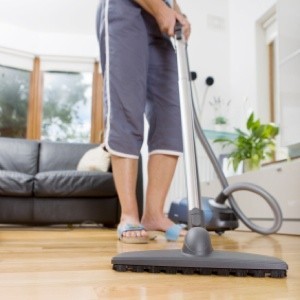What four letter word do housekeepers all have in common? Dust. Although house dust is comprised of harmless particles of natural materials like skin, hair, pollen, insect parts, plant matter, paper and other natural fibers-it can also be contaminated by a wide variety of pollutants like heavy metals, pesticides, hydrocarbons, synthetic chemicals and other toxins. Here are some tips for keeping your home as dust-free and healthy as possible.
Dust Reducing Tips:
- Use a vacuum with a HEPA filter (high-efficiency particulate air filter) on all of your floors and surfaces. HEPA filters catch dust and trap it effectively so you can safely dispose of it outside the home. Many vacuums catch large particles and blow the smaller particles back out into the air. HEPA filtration prevents this re-circulation and isolates all the contaminated dust you capture.
- Vacuum floors and upholstered fabrics once a week to avoid dust build-up.
- Vacuum or (when possible) wash curtains and drapes frequently in hot water.
- When vacuuming, improve ventilation by opening doors and windows. Send children and pets out of the room.
- To kill any dust mites that might be present, bedding and mattress pads should be washed at least once a week in hot water that is at least 130 F. If you don't want to set your water heater that high, use the commercial grade washers at a laundromat.
- Allergy experts recommend washing your pillows occasionally in the washing machine. Feather pillows can be washed using a delicate cycle and a small amount of detergent. Dry them on low in the dryer with several tennis balls to restore their fluff.
- Dust frequently, at least weekly. Avoid feather dusters or other tools that simply stir up dust so you can inhale it before it settles back onto surfaces.
- Use a damp cloth or mop instead, rinsing frequently in a bucket of hot water.
- Use wood or other hard surfaces for flooring wherever possible. Non-carpeted flooring won't trap dust and pollutants and is easier to clean and maintain.
- Where you need something soft, use washable rugs made from natural fibers that won't off-gas toxic chemicals or require the use of toxic adhesives.
- Avoid using traditional spray cleaners or furniture waxes when dusting. These products contain a variety of synthetic chemicals and are considered some of the most toxic cleaning products available.
- Keep walkways and entrances to your home free of dirt, soil, and other materials that can get tracked into the house.
- Make use of doormats near exterior doors, and vacuum them regularly to make sure they don't become a source of dust.
- Shoes are one of the prime ways dust (and pollutants) enter the home. Post a friendly sign asking everyone to remove their shoes before entering.
- Get rid of excess clutter. It attracts dust and makes it harder to keep surfaces clean. (It also makes your brain dusty.) Store and display collections and knick knacks in glass cabinets or display cases.
- Ban smoking in your home. Tobacco smoke contributes to the particulate pollution burden your home's dust carries (especially the volatile organic compound benzene). Secondhand smoke also poses a direct threat to your health.
- Purify the air in every room with a plant. Plants naturally absorb many of the toxic gases that a modern home traps inside. NASA studies have shown that spider plants, philodendron, and pothos can absorb as much as 80% of the formaldehyde in a room in 24 hours.
- Washing your pets regularly and keep them well-groomed to cut down on dander. With a bit of training, even cats will tolerate the occasional bath.
Ellen Brown is an environmental writer and photographer and the owner of Sustainable Media, an environmental media company that specializes in helping businesses and organizations promote eco-friendly products and services. Contact her on the web at http://www.sustainable-media.com

